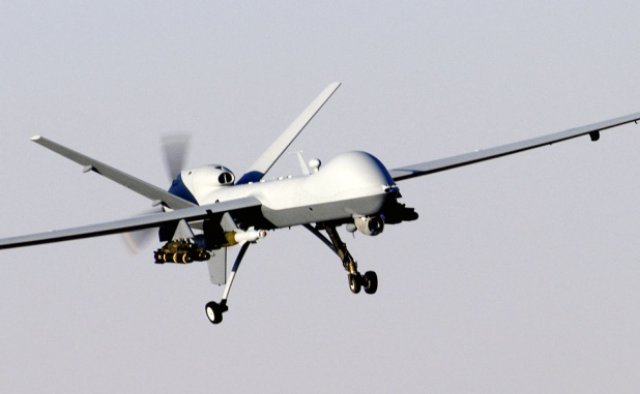The US Air Force next month will finally reach the target number of 65 combat air patrols for its Predator and Reaper fleet, while the administration seeks to cut back on its drone operations in theatre. The Air Force’s long-term outlook for its remotely piloted aircraft fleet was released last Friday, and includes insights into how future generations of unmanned systems will take on some missions exclusively flown by manned aircraft today, along with the current state of drone operations.
The report, called the “RPA Vector,” states that in May the Air Force will reach 65 round-the-clock combat air patrols, a number required by then-Defense Secretary Robert Gates while the U.S. was still in Iraq. The 65 total patrols will be split between the service’s two main drones — 33 flown by the MQ-1B Predator and 32 by the MQ-9 Reaper.
The service, in its 2015 budget request, is looking to cut that number of patrols to just about 45 with the ability to surge, along with plans to retire the Predator fleet. Air Force officials have said the larger number of patrols made sense at the time it was given, but with Afghanistan winding down, it isn’t the right number now.
The service’s overall remotely piloted aircraft community has grown from about 2,100 personnel in 2005 to as many as 9,900 in 2017. The airmen who fly and maintain the entire fleet make up 24 units at 18 bases in the continental United States, 11 of which are a part of the Air National Guard. To meet the growing demand for crews, the Air Force has ramped up its training. For example, in fiscal 2012, more aircrew went through initial qualification training for drones than fighters or bombers combined, according to the report.
And the Air Force has big plans for its future fleet.
“There is so much more that can be done with RPAs,” Col. Sean Harrington, an ISR command-and-control requirements chief, said in a release announcing the report. “Their roles within the Air Force are evolving. We have been able to modify RPAs as a plug-and-play capability while looking to expand those opportunities.”
The current mission of unmanned aircraft is broken down into six areas: agile combat support; in-theater command and control; global ISR; global precision attack; building partnerships while working with other militaries; and special operations support.
Near-term plans for new drones include global command-and-control and battlefield air operations for special operations missions.
The Air Force’s plans over the next 25 years show a desire to have future drones take over or assist with missions that are closely held by manned aircraft. This includes air superiority, global analysis of ISR, global precision and strategic attack, personnel recovery, aeromedical evacuation, airlift, air refueling, space superiority and the mobility of special operations forces.
The report does show hesitancy to have future drones handle other missions that are exclusive to manned aircraft, specifically nuclear strike.
“Certain missions, such as nuclear strike, may not be technically feasible unless safeguards are developed and even then may not be considered for [unmanned] operations. … Ethical discussions and policy decisions must take place in the near term to guide development of future UAS capabilities, rather than allowing the development to take its own path apart from critical guidance.”
The Air Force, however, needs to consider if all new aircraft should be unmanned, outside of acquisition programs underway. Beyond life-cycle and acquisition costs, Air Force analysis on new programs needs to consider the benefits and limitations of manned and unmanned aircraft.
“Some questions to consider when evaluating manned versus unmanned options: Does the mission require extreme endurance? Does the mission require a high level of risk? Does the risk and cost of losing an aircraft outweigh the mission it was designed to perform?” the report states. “These examples illustrate the importance of considering manned or unmanned alternatives where appropriate and pursuing the appropriate course based on analysis and affordability.”
Source: Air Force Times

